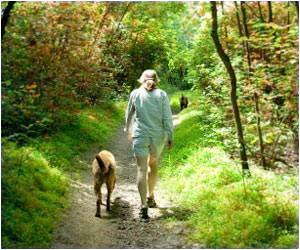Want to stay active? Start playing sport now. Men who are physically active in mid-life are more likely to continue the habit into older age.

‘Sport participation in mid-life may help maintain physical function and self-efficacy in later life.’





The health benefits of being physically active throughout the life course are well known, but the transition from mid-life to old age often coincides with major life events, such as retirement, when both the amount and frequency of exercise are likely to change, say the researchers.To find out what types of physical activity endure through middle age to later life, the researchers tracked the behaviour of nearly 3,500 men for up to 20-years, all of whom were taking part in the British Regional Heart Study.
This involved nearly 8,000 men on family doctor patient lists from 24 British towns, who first entered the study between 1978 to 1980 when they were aged between 40 and 59. They were subsequently monitored after 12, 16, and 20 years.
Each participant filled in a detailed questionnaire on their medical history and lifestyle, which included questions on the amount and type of physical activity they engaged in: walking; recreational activities, such as recreational walking, home improvements (DIY), gardening and chores; and sports/formal exercise.
The responses were scored according to the intensity and frequency of the activity, and the figures combined to give a total activity score. Men who played sports also disclosed how long they had been doing it for.
Advertisement
Throughout the 20-year study the proportion of men classified as active remained at around two thirds at each check up. However, this masked the changes in the types of activity the men did over time.
Advertisement
The proportion of men who reported high levels of walking rose from just under 27% at the start of the study to 62% at the 20 year check up, possibly because retirement might free up more time, say the researchers.
But there were sharp falls in the proportion who engaged in recreational activities, with over half the men (56%) reporting high levels at the start of the study, but only 40% doing so at the 20 year check up.
This could be because ill health may curtail more strenuous activities in older age, suggest the researchers.
The other key finding was that men who were active in midlife were nearly three times as likely to be physically active 20 years later, after taking account of potentially influential factors.
Interestingly, sport participation in midlife predicted physical activity in old age more strongly than other types of physical activity. The odds were even greater for those who had played sports for 25 years or more: these men were nearly 5 times as likely to be physically active into older age compared with men who didn't play sports.
The authors of this research, from University College London, suggest there may be a number of reasons for this. "One possibility is that people's enjoyment of sport may be more likely to persist into old age than preferences for other types of activity," they write.
"Sport participation in mid-life may help maintain physical function and [physical activity] self-efficacy in later life, increasing psychological and physical readiness for [physical activity] in old age," they add.
Daniel Aggio, lead author of this study, said: "Early engagement in sport and structured exercise may be vital for developing the necessary motor skills needed to establish a lifelong habit for physical activity. However, it may also be important to provide opportunities to take up other forms of activity, such as walking, during the transition to old age."*
Source-Eurekalert










